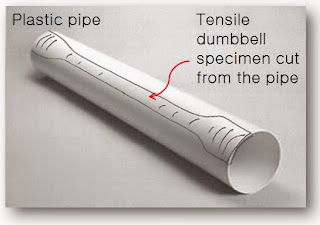Closed Loop Brinell Hardness Test – Does not require a clamp
I often get asked “Why do your large Brinell hardness
testers not have a clamp option” The answer begins with understanding why old
technology Brinell testers had and required a clamp feature. They were dead
weight machines i.e. the load (in the case of regular Brinell 3000kg) was
applied using actual physical weights hanging inside the machine. If a work
piece or component was not clamped it could move as the weight was applied thus resulting in an indentation in the metal which could be less than the true
size due to the movement. So A clamp was used to pre clamp the work piece or
component thus stopping it from moving as the load was applied ensuring a true
sized indentation.
However a modern closed loop Brinell tester like the Tinius
Olsen models FH-009, FH-008, FH-012 do not use dead weights, this means
clamping of the work piece is not required. This is because the closed loop
system sampling and applying the 3000kg force ensures, very accurately, that
the tester keeps pushing, keeps applying the force until the true 3000kgf is
reached. So even if the work piece moves the tester keeps applying the force
thus obtaining a true indent at 3000kgf.
See Clip with no clamp
Clip with Clamp
Same hardness tester exactly the same results.
This means modern Brinell testers are more efficient to use
as clamping is not required and importantly they easily handle irregular shaped components
which in the past would have been difficult to clamp.
Check out the TO Brinell for yourself click here



Comments
and I am inspired! Extremely useful info specially the closing phase :) I take care of such information much.
I used to be seeking this certain information for a
long time. Thanks and good luck.
love with them.
I'm trying to find out if its a problem on my end or if it's the blog.
Any responses would be greatly appreciated.
@Anonymous(of 30th June): Sir/Ma'm, The blog is working on almost all the browsers and doesn't seems to be a problem on any computer systems.
In this particular article we have used video clips rather than images, you may need to allow your browser to use flash player in order to view them.
Thanks a lot for taking time to go through the blog.